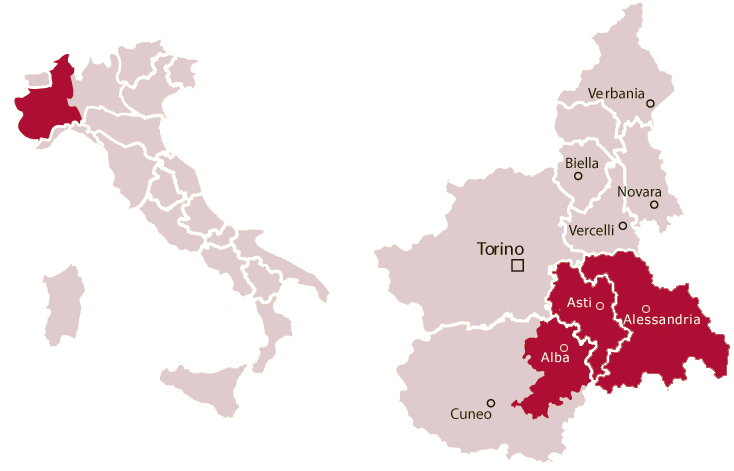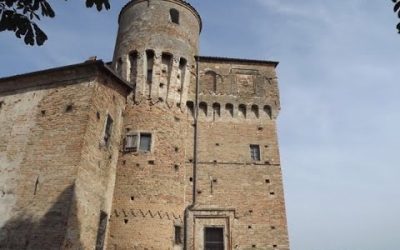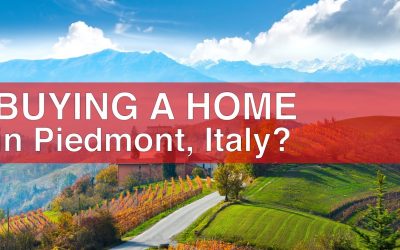Piedmont, Italy Culture: Rich Tapestry of History, Art, Gastronomy in Northern Italy
Nestled in the northwestern corner of Italy, the region of Piedmont is a treasure trove of history, art, literature, and gastronomy. Boasting a rich and diverse cultural tapestry, Piedmont has captivated visitors for centuries with its stunning landscapes, architectural wonders, and delectable cuisine.
In this article, we will embark on a journey to explore the multifaceted aspects of Piedmontese culture, delving into its geographical and historical significance, its architectural heritage, language and literature, arts and entertainment, food and wine, festivals and celebrations, and its adaptation to the modern world.
Join us as we unravel the captivating story of Piedmont, a region that continues to enchant and inspire with its timeless charm.
Discovering the Cultural Tapestry of Piedmont: An Introduction to the Region’s Significance

Piedmont, located in northern Italy, is a region of immense cultural significance. Its rich history, diverse heritage, and vibrant traditions make it a captivating destination for those seeking to explore the cultural tapestry of Italy. From its geographical features to its architectural wonders, literature, arts, cuisine, and festivals, Piedmont offers a unique and immersive experience that showcases the essence of Italian culture.
Geographically, Piedmont is nestled between the majestic Alps and the fertile plains of the Po River. This strategic location has played a vital role throughout history, as the region served as a gateway between Italy and neighboring countries. Its geographical significance is further enhanced by the presence of breathtaking landscapes, including picturesque vineyards, rolling hills, and charming towns. The natural beauty of Piedmont provides a backdrop for the region’s cultural heritage, making it an ideal destination for those seeking both aesthetic and historical experiences.
Piedmont’s history is a fascinating tapestry that has shaped its culture. From the Roman Empire to the Kingdom of Savoy, the region has witnessed the rise and fall of influential civilizations. The Kingdom of Savoy, in particular, played a pivotal role in shaping Piedmont’s identity, as it eventually became the nucleus of a unified Italy. This historical significance is reflected in the region’s architecture, with key monuments, palaces, and castles dotting the landscape.
Piedmont’s Legacy: A Tapestry of Historical Brilliance and Cultural 🏞️
Piedmont, ensconced between the towering Alps and the Po River, has historically been a magnet for diverse civilizations. Its prime geographical location in northwest Italy has made it a melting pot of cultures, witnessing footprints from the Celts, Romans, and Lombards. Each era has enriched the region’s cultural tapestry, resulting in a unique blend of traditions, language, and art.
The influence of the Roman Empire is profoundly evident in Piedmont’s capital, Turin. Once known as Augusta Taurinorum, Turin showcases remnants of its illustrious Roman past. Landmarks like the Roman Theater and Porta Palatina aren’t just archaeological sites; they’re living testimonials to the city’s ancient splendor that shaped the foundation of modern Piedmontese culture.
Medieval Majesty: Castles and Dynasties 🏰

The medieval epoch in Piedmont heralded the rise of influential dynasties, imprinting their architectural prowess across the region. The landscape is adorned with resplendent castles and palaces, silent witnesses to the era’s power struggles and aristocratic grandeur. Chief among these is the UNESCO-listed Royal Palace of Turin, encapsulating the essence of Piedmont’s regal history.
Unearthing the Historical Gems: Exploring Piedmont’s Past and Its Influence on Culture
Piedmont, with its rich history and heritage, is a treasure trove of historical gems that have greatly influenced its culture. From ancient civilizations to medieval dynasties, the region’s past is deeply intertwined with its present, shaping its language, architecture, arts, and cuisine. One of the key aspects of Piedmont’s historical significance is its geographical location. Nestled in the northwest corner of Italy, bordered by the majestic Alps and the Po River, the region has been a crossroads of civilizations throughout history. This strategic position attracted various cultures, including the Celts, Romans, and Lombards, who left their indelible marks on the region.
The Roman period, in particular, played a crucial role in shaping Piedmont’s culture. The ancient Roman town of Augusta Taurinorum, present-day Turin, was the capital of the Roman province of Transpadane Gaul. The remnants of this ancient city can still be seen today, with archaeological sites like the Roman Theater and Porta Palatina serving as a testament to its grandeur.
Moving forward in time, the medieval period witnessed the rise of powerful dynasties that left an enduring architectural legacy. Piedmont is dotted with magnificent castles, palaces, and fortresses that were once the seats of noble families.
From Castles to Palaces: A Journey through Piedmont’s Architectural Heritage
Piedmont, with its rich history and cultural significance, boasts a remarkable architectural heritage that showcases the region’s grandeur and elegance. From medieval castles to opulent palaces, Piedmont’s architectural treasures captivate visitors with their beauty and historical significance. One cannot explore Piedmont’s architectural heritage without mentioning the iconic monuments that have stood the test of time. The imposing Turin Cathedral, with its distinctive Renaissance facade, is a testament to the region’s religious history and architectural prowess. The medieval fortress of the Mole Antonelliana, now home to the National Cinema Museum, stands tall as a symbol of Turin’s industrial past.
Palaces, too, hold a special place in Piedmontese architecture. The Royal Palace of Turin, a UNESCO World Heritage site, exemplifies the region’s royal legacy. Its opulent interiors and vast gardens provide a glimpse into the lavish lifestyle of Piedmont’s aristocracy. The Palazzo Madama, a stunning combination of medieval and baroque styles, now serves as a museum, housing an extensive collection of artworks.
Piedmont is also home to an array of castles, each with its unique charm and historical significance. The Castle of Grinzane Cavour, a medieval fortress perched on a hill, offers panoramic views of the surrounding vineyards and is a testament to Piedmont’s wine-making heritage.
The Language That Binds: Exploring Piedmontese and Its Cultural Impact
Piedmont, with its rich cultural heritage, boasts a unique language known as Piedmontese. This regional language holds a significant place in the cultural identity of Piedmont and has played a pivotal role in shaping the region’s history and literature.
Piedmontese, classified as a Gallo-Italic language, shares roots with other Romance languages such as French and Occitan. It is primarily spoken in Piedmont and some neighboring areas of Italy, serving as a linguistic bridge that binds the community together. Although Italian is the official language of the country, Piedmontese continues to be spoken and cherished by the locals, contributing to the preservation of the region’s distinct cultural identity.
The usage of Piedmontese extends beyond daily conversation, as it has also found its way into literature. Notable authors from Piedmont, such as Cesare Pavese and Beppe Fenoglio, have masterfully crafted their works in Piedmontese, showcasing the language’s beauty and depth. These literary masterpieces have not only enriched Piedmontese literature but have also made a lasting impact on Italian literature as a whole. Piedmontese language and literature have become an integral part of Piedmont’s cultural fabric, acting as a source of pride and unity for its people. The language serves as a means of preserving and transmitting traditions, customs, and stories from one generation to another.
Literary Giants of Piedmont: Influential Authors and Their Works
Piedmont, as a region in Italy, boasts a rich literary tradition that has contributed significantly to the cultural landscape of the area. Throughout its history, Piedmont has produced many influential authors and their works, which have left a lasting impact on Italian and world literature.
One notable literary giant from Piedmont is Cesare Pavese, whose works delve into existential themes and the complexities of human relationships. His novel, “The Moon and the Bonfires,” explores the aftermath of World War II and the challenges faced by individuals trying to rebuild their lives. Pavese’s introspective and lyrical writing style has earned him critical acclaim and a dedicated following.
Another prominent Piedmontese author is Beppe Fenoglio, who is celebrated for his poignant depiction of the Italian Resistance during World War II. His novel, “The Partisan’s Notebook,” captures the struggles and sacrifices of the resistance fighters, highlighting their courage and determination. Fenoglio’s evocative storytelling and realistic portrayal of historical events have made him a revered figure in Italian literature. In addition to Pavese and Fenoglio, Primo Levi is another literary giant from Piedmont who has left an indelible mark on the literary world. Levi, a Holocaust survivor, wrote extensively about his experiences in Nazi concentration camps, providing a firsthand account of the atrocities committed during that dark period.
Brushstrokes and Sculptures: Piedmont’s Contribution to the Fine Arts
Piedmont, with its rich cultural heritage, has made significant contributions to the world of fine arts. The region’s artistic legacy can be seen through its impressive collection of paintings and sculptures. Piedmont has been home to renowned artists who have left an indelible mark on the art world. From the Baroque period to the modern era, Piedmontese artists have created masterpieces that continue to captivate audiences today.
In the realm of painting, Piedmont has produced notable artists such as Giovanni Martino Spanzotti, who was known for his religious and mythological scenes. His works, characterized by their intricate details and vibrant colors, showcase the skill and talent of Piedmontese painters.
Another prominent painter from Piedmont is Gaudenzio Ferrari, whose frescoes can be found in various churches and monasteries throughout the region. Ferrari’s works are known for their expressive and emotional portrayals, often depicting biblical scenes and religious figures. Piedmont is also renowned for its contributions to sculpture. The region boasts magnificent sculptures that showcase the craftsmanship and artistic prowess of Piedmontese sculptors. One notable sculptor is Benedetto Antelami, whose works can be seen in the Baptistery of Parma. Antelami’s sculptures are characterized by their intricate details and lifelike representations, showcasing his mastery of the craft.
Lights, Camera, Action: Piedmont’s Vibrant Film, Music, and Theatre Scene
Piedmont’s vibrant film, music, and theatre scene is a testament to the region’s rich cultural heritage. In recent years, Piedmont has become a hub for artistic expression, attracting filmmakers, musicians, and actors from all over the world. The film industry in Piedmont has experienced significant growth, with the region serving as a backdrop for numerous international productions. The picturesque landscapes and historical architecture of Piedmont have made it a favorite destination for filmmakers seeking the perfect setting for their stories. From small independent films to big-budget blockbusters, Piedmont has seen it all.
In addition to being a popular filming location, Piedmont also hosts several film festivals throughout the year. The Torino Film Festival, one of Italy’s most prestigious film events, showcases a diverse range of films from both established and emerging filmmakers. This festival not only provides a platform for local talent but also attracts international attention, further cementing Piedmont’s reputation as a prominent player in the film industry.
Piedmont’s music scene is equally vibrant, with a diverse range of genres and styles. The region has produced many notable musicians and bands that have made significant contributions to the Italian music industry. From classical composers to contemporary pop artists, Piedmont has been a breeding ground for talent. Theatre also plays a vital role in Piedmontese culture, with numerous theatres and performance spaces scattered throughout the region. From traditional theatre productions to experimental performances, there is always something happening on Piedmont’s stages
A Gastronomic Delight: Savoring Piedmontese Cuisine and Wine
Piedmont, renowned for its culinary traditions, offers a gastronomic experience like no other. The region’s cuisine is a reflection of its rich agricultural heritage and the use of high-quality local ingredients. From hearty dishes to delicate flavors, Piedmontese cuisine is a true delight for food enthusiasts.
One of the most famous dishes from Piedmont is the indulgent “bagna cauda,” a warm anchovy and garlic dip served with an assortment of fresh vegetables. This dish perfectly represents the region’s love for bold flavors and simple yet exquisite combinations. Another must-try is the “vitello tonnato,” a chilled veal dish topped with a creamy tuna sauce, which showcases the region’s ability to create harmonious flavor profiles.
Piedmont is also known for its exceptional pasta dishes. The “agnolotti del plin” is a local specialty, featuring small, hand-folded pockets of pasta filled with flavorful meat or vegetable fillings. This delicate dish highlights the region’s attention to detail and dedication to preserving traditional culinary techniques. No discussion of Piedmontese cuisine would be complete without mentioning its world-famous truffles. The region is a treasure trove for truffle lovers, with Alba being the epicenter of truffle production. The Alba White Truffle Fair is a major event in the region, attracting food enthusiasts from around the globe.
Festivals that Define Piedmont: Celebrating Tradition and Cultural Identity
One of the most captivating aspects of Piedmont’s culture is its vibrant and lively festival scene. Throughout the year, the region comes alive with a variety of celebrations that showcase its rich traditions and cultural identity. These festivals not only provide a glimpse into the past but also serve as a way for the Piedmontese people to express their pride and preserve their heritage.
One of the most famous festivals in Piedmont is the Palio of Asti. Held annually in the city of Asti, this centuries-old event is a thrilling horse race that dates back to medieval times. The Palio attracts thousands of spectators who gather in the historic center to witness the intense competition between the city’s different districts. The race is not only a display of equestrian skill but also a symbol of local pride and unity.
Another significant festival in Piedmont is the Alba White Truffle Fair. Alba, a small town in the region, is renowned for its exquisite white truffles, and this annual fair celebrates this prized culinary delicacy. During the fair, visitors can indulge in truffle tastings, attend cooking demonstrations by renowned chefs, and explore the bustling market stalls filled with a wide variety of truffle products. The Alba White Truffle Fair not only highlights Piedmont’s gastronomic excellence but also attracts food enthusiasts from all over the world.
Embracing the Modern Era: Piedmontese Culture in the Global Context
Piedmontese culture, with its deep historical roots and rich heritage, has not been immune to the influences of the modern world. As the region has embraced globalization, it has also managed to preserve its unique identity and contribute to the global cultural landscape.
In recent years, Piedmont has experienced a resurgence in its cultural initiatives, with a focus on promoting its traditions while embracing contemporary influences. The region has recognized the importance of adapting to the modern era and staying relevant in a global context. One way Piedmontese culture has embraced the modern era is through its flourishing arts and entertainment scene. The region has fostered a vibrant film, music, and theatre industry, producing talented artists who have gained recognition both nationally and internationally. Piedmontese filmmakers have contributed to the global cinema landscape, with their unique storytelling and visual aesthetics. Similarly, musicians and actors from the region have made their mark in the entertainment industry, showcasing the diversity and creativity of Piedmontese culture.
In addition to the arts, Piedmont has also embraced the modern era through its culinary scene. While traditional Piedmontese cuisine remains a cornerstone of the region’s gastronomy, chefs have incorporated global flavors and techniques, creating innovative and fusion dishes that appeal to a wider audience. This culinary evolution has helped Piedmontese cuisine gain recognition on the global stage, attracting food enthusiasts from around the world.
In conclusion
Piedmont is a region that boasts a rich and diverse cultural tapestry. From its historical significance to its architectural heritage, language and literature, arts and entertainment, food and wine, and vibrant festivals, Piedmont offers a plethora of experiences that truly define its unique cultural identity. Despite the challenges of the modern world, Piedmontese culture continues to adapt and thrive, with numerous initiatives and institutions promoting its heritage.
We encourage readers to delve deeper into the wonders of Piedmontese culture, to explore its offerings, and to experience firsthand the richness and relevance that this region has to offer. Whether it be through its historical sites, literature, arts, festivals, or gastronomy, Piedmont promises a captivating journey into a cultural world waiting to be discovered.





